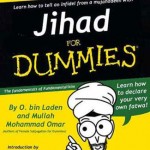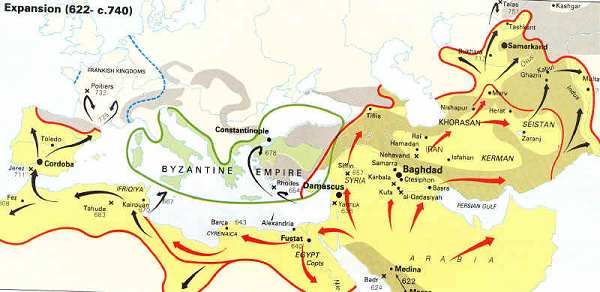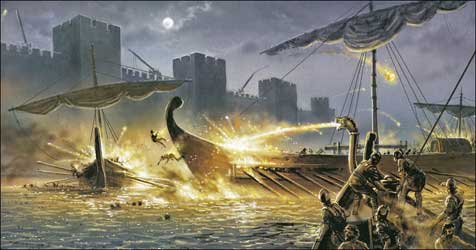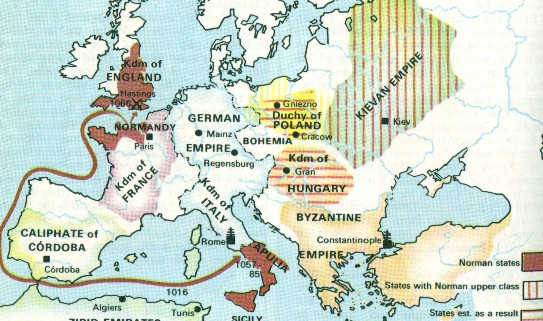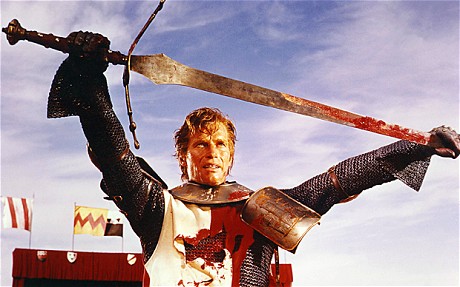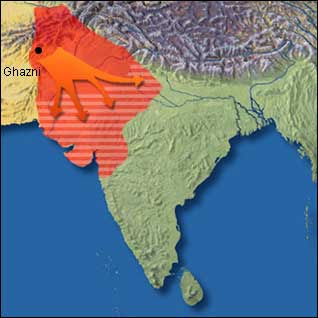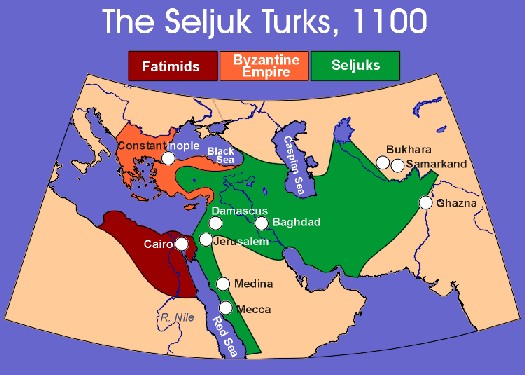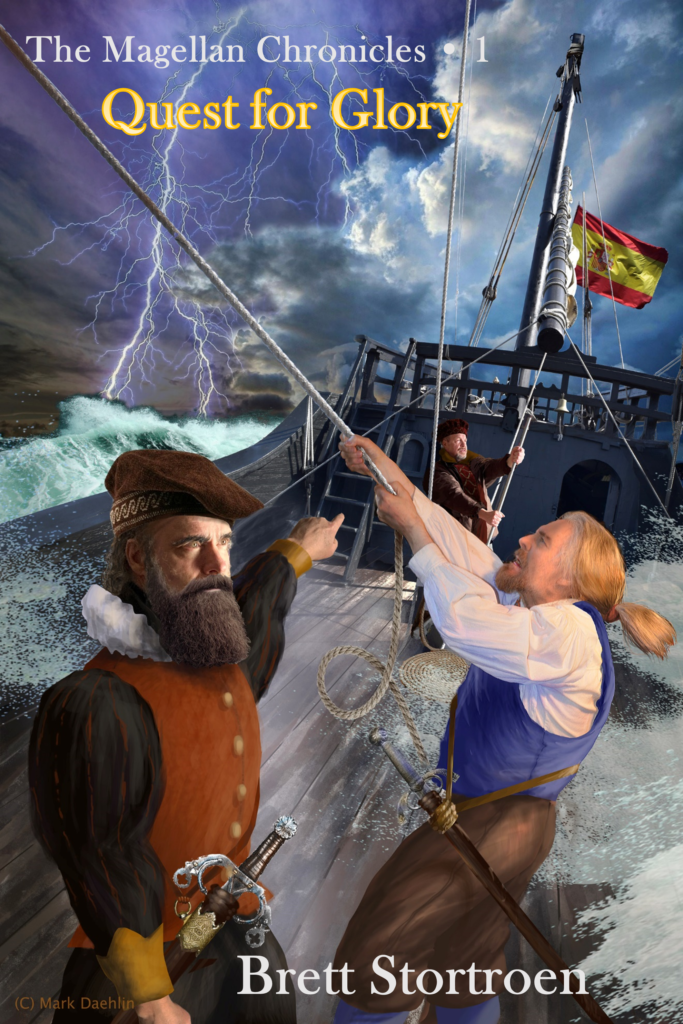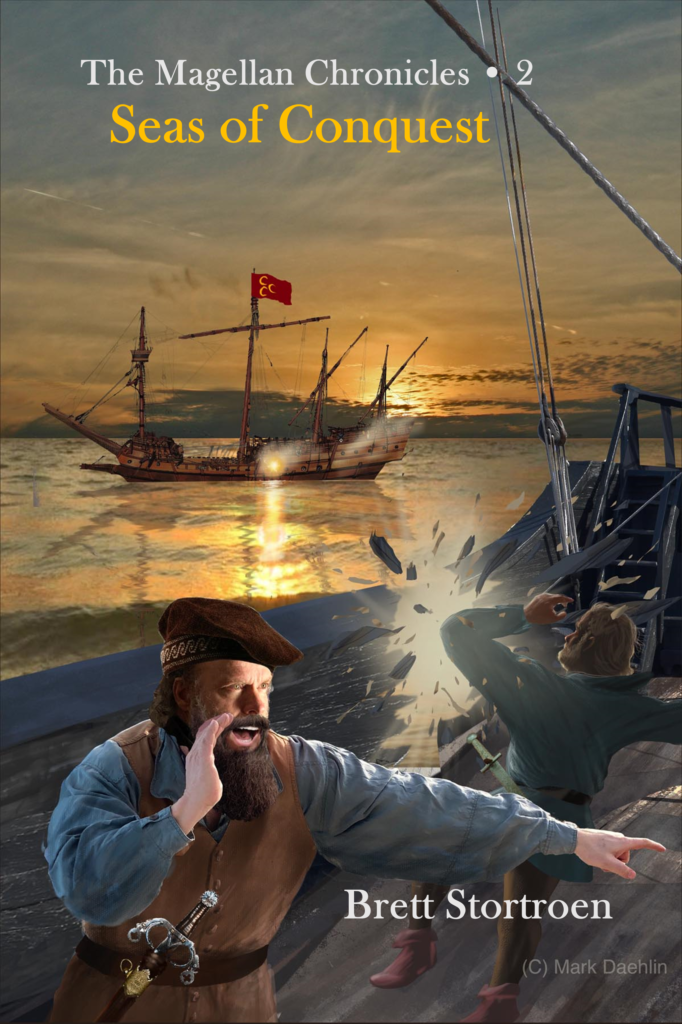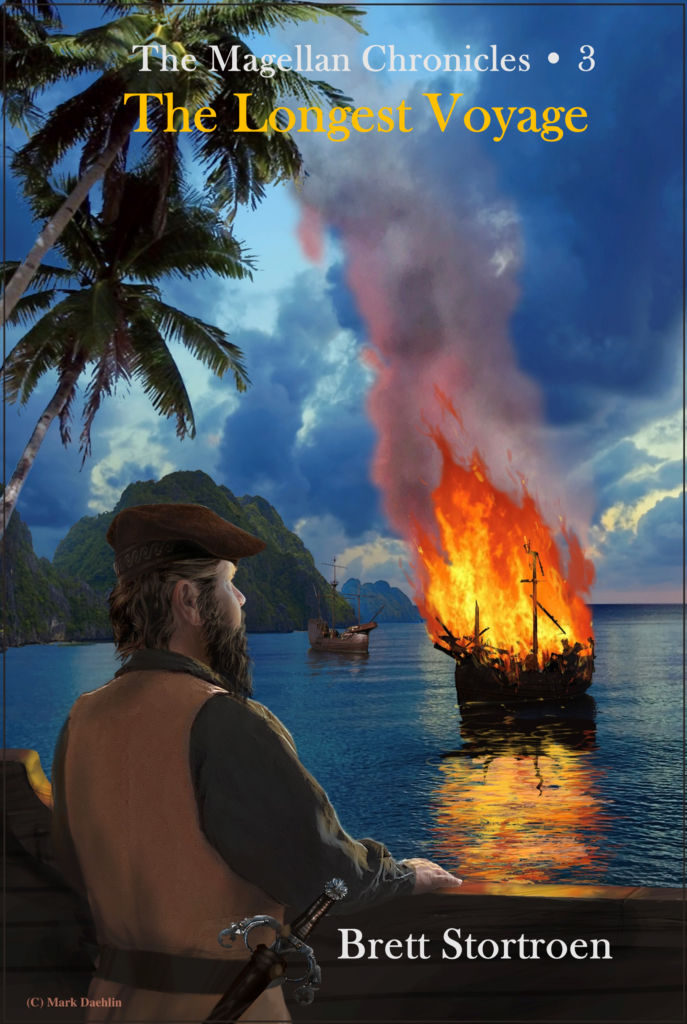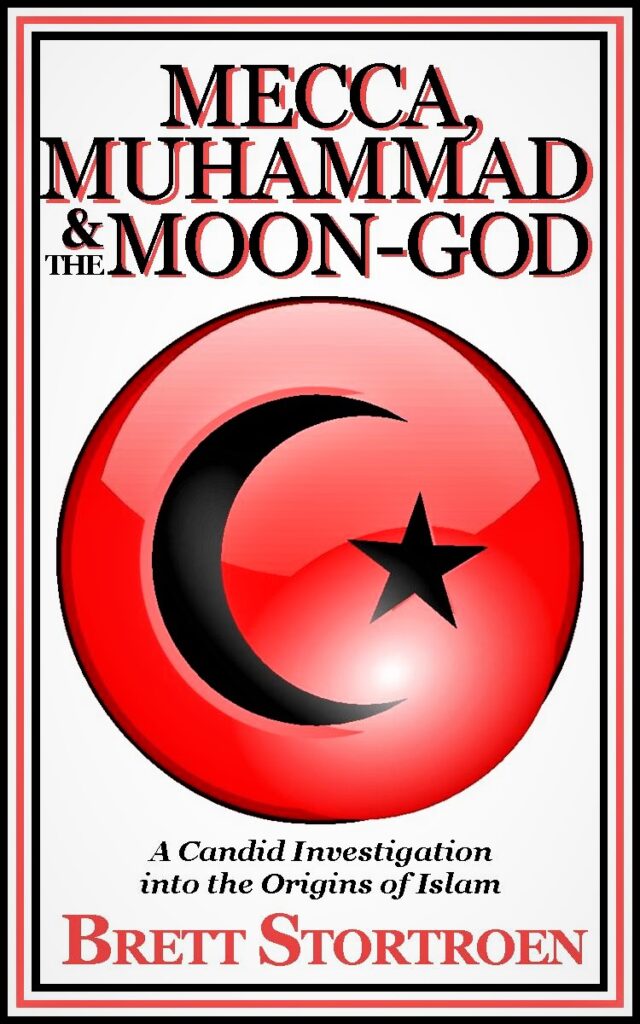The mission of Muhammad and his moon-god Allah may be summed up in one Qur’an verse: “And fight them until persecution is no more, and all religion is for Allah” (Qur’an 8:39). Throughout history, Muslims have conquered and pillaged in the name of Allah. In Farrakhan, Islam and the Religion that is Raping America, Moody Adams narrates:
Muhammad led 27 invasions of neighboring countries, personally fighting in nine of these and killed thousands. In addition, he ordered his followers to conduct at least 47 other invasions that reigned death on neighboring countries.[26]
Within twenty-five years, Muhammad’s followers conquered Syria, Persia, Palestine, and Egypt. Two men responsible for many of these early conquests were the caliph Abu Bakr and Khald ibn al-Walid, both of whom the prophet highly esteemed. Below, a few examples of the Islamic carnage have been cited.
Abu Bakr ordered Khalid to subdue the Persians and take the ports of Iraq. The Iraqi general, Hermez, was given the ultimatum to embrace Islam and pay the special tax called al-Jizya; or he was given the option to fight. Hermez refused to submit. So, the Muslims looted the Persians and one-fifth war booty was seized. During the battle of Alees on the border of Iraq, 70,000 people were slain by Khalid. These were staggering numbers for the world population of that time. In Ayn al-Tamr, Iraq, a siege was set on one of the fortresses. Then, Khalid proceeded to murder all the inhabitants for refusal to surrender to the religion of Islam. Abu Bakr decided to invade Syria and at the battle of Yarmouk thousands were decimated.[27]
What was the impetus and drive behind the Islamic Imperial conquests? Muhammad laid out his vision for world domination under Islam and combined the sacred mandate with the quest for profit. Muhammad always promised much war booty to those who would fight in holy wars. Muhammad’s successor and first caliph promised booty to be seized from the Byzantines. Likewise, Muhammad’s son-in-law and fourth caliph, Ali ibn Abi Talib, laid out an enticing vision, “Before you lies these great sawad [the fertile lands of Iraq] and those large tents”[28] The third caliph, Uthman, another son-in-law of Muhammad, acquired outrageous wealth from these wars. Karsh comments:
By the time of his assassination in July 656 A.D., he (Uthman) had netted himself a fortune of 150,000 dinars and one million dinars in cash, and the value of his estates amounted to 200,000 dinars, aside from a vast herd of camels and horses. This fortune paled in comparison with the fabulous wealth amassed by some of Muhammad’s closest companions. The invested capital of Zubair ibn Awam amounted to some fifty million dirhams and 400,000 dinars, and he owned countless properties in Medina, Iraq and Egypt. Talha ibn Ubaidallah, one of the earliest converts to Islam to whom Muhammad had promised a place in Paradise, . . . left, according to some authorities, 200,000 dinars, and 2.2 million dirhams in cash, and his estates were valued at thirty million dirhams. His investments in Iraq alone yielded him one thousand dinars per day.[29]
With the Islamic Empire moved to Baghdad the vast trade routes were opened to the far reaches of the globe and the Islamic Empire transformed into a leading economic power. All this new wealth came at the expense of those who were conquered. For example, the drive to acquire gold was insatiable as Muslims plundered the Sudan of all its resources, robbed vast amounts from the Iranian palaces, and even raided the tombs of the pharaohs of Egypt.
Furthermore, the profitable Islamic slave trade minions captured black East Africans by the thousands and forced them into labor camps in the salt flats near Basra. They were labeled a class called (Zanj), treated poorly, torn from their families and given small rations. Amazingly, Islamic adherents today continue to subdue the Africans in brutal domination and trade them off as slaves.[30]
The Islamic hordes continued to expand their empire throughout the known ancient world. By the early eighth century, the empire conquered Central Asia, vast territory in the Indian subcontinent, the western regions of China, laid siege to the Byzantine capitol Constantinople, and invaded North Africa and Spain.[31] In addition, Southern Italy and the Mediterranean islands (Corsica, Sicily, Cyprus, Crete, Rhodes, Malta and Sardinia) were conquered by Islamic forces.
Karsh gives an interesting historical thread of obedient adherence to Muhammad’s calls to subjugate the entire world for Allah:
“I was ordered to fight all men until they say ‘there is no god but Allah.’” — Prophet Muhammad’s farewell address, March 632
“I shall cross this sea to their lands to pursue them until there remains no one on the face of the earth who does not acknowledge Allah.” — Saladin, January 1189
“We will export our revolution throughout the world . . . until the calls ‘there is no god but Allah and Muhammad is the messenger of Allah’ are echoed all over the world.” — Ayatollah Ruhollah Khomeini, 1979
“I was ordered to fight the people until they say there is no god but Allah, and his prophet Muhammad.” — Osama bin Laden, November 2001[32]
Battle of Constantinople
The Islamic juggernaut piled through the Eastern Christian frontier slaughtering anyone who did not submit to Allah. In 705 Muslims locked up all the Armenian Christian nobles inside a church and burned them to death. Numerous massacres against Christian and Jewish populaces took place during these Islamic incursions.[33]
Many historians regard the victory over two Islamic sieges against Constantinople (674-678 and 717-718) as one of the great turning points in history. The powerful Christian Byzantium capital of Constantinople was a fortified stronghold. It was the gateway to Europe and the last resistance against the Islamic armies in the East.[34]
The Caliph Muawiyah had just defeated the Byzantine armies in Egypt, Syria, and the entire north coast of Africa. The Caliph brought a massive army of 50,000 Islamic Jihadists to the heart of Byzantium, Constantinople. It was only by maintaining a superior technological advantage via powerful fortifications and a secret offensive weapon that Byzantium was able to overcome the Islamic siege.
In God’s Battalions, Rodney Starks describes the walls of Constantinople:
These were not merely walls; they were an engineering marvel: a massive outer wall with towers and superb battlements and behind it an even stronger inner wall, forty feet high and fifteen feet thick, having even more elaborate battlements and towers. If that was not enough, on the landward side there was a huge moat, and, of course, on the other three sides attackers could reach the walls only by boat.[35]
The Byzantines were able to repel the Islamic frontal siege attacks. However, the Muslims also attempted to starve the city inhabitants by employing a naval blockade. In fortuitous timing, a Syrian engineering architect named Kallinikos of Heliopolis had fled the Islamic persecution in his homeland and settled in Constantinople. He was given credit for the invention of “Greek fire.” However, its true origins were likely derived from the alchemist technology based on ancient texts or preserved knowledge from the legendary Egyptian Library of Alexandria.
Greek fire was similar to modern napalm. It was highly flammable and could not be extinguished by water. The Byzantines hurled the fire via catapults or pumping devices. The catapults could send the flammable substance contained in glass or pottery up to 400-500 yards. Upon impact the flames could spread out 75 feet in diameter and inflict considerable damage to enemy ships. However, catapults were difficult to employ from ships so the Greeks devised a type of flamethrower which consisted of a pump that could discharge the stream of liquid through a tube installed in the bow of the galley. The Byzantines decimated the Muslim ships by this technological weapon over and over again.
In 717, the Muslims brought forth a massive contingent of 1800 galleys against Constantinople. The Byzantines lured the Muslim navy into the Bosporous and then pummeled them with Greek fire, destroying most of their fleet. The next spring the Muslims tried again with a new navy but again succumbed to the onslaught of the Byzantine arsenal of Greek fire.[36] These famous early battles of Constantinople were crucial to preserving Europe from a certain Islamic invasion via the Balkans.
Battle of Tours/Poitiers
In their zealous quest for world domination the Islamic war machine set their sites on the heartland of Europe in an assault to the western front. The Muslim invaders, led by Abdul Rahman Al Ghafiqi pushed further north from Spain into France. Along the way the Muslims slaughtered several Christian armies, burned churches, looted and plundered. They were about to pillage the basilica of St. Martin of Tours but first paused to revel in their conquests and booty seized. Meanwhile, the approach of Charles Martel and his famous Merovingian Knights made steady progress, unnoticed by Abdul Rahman’s army.
Martel was exceptionally tall and powerfully built. His stunning victories against the Alemanni, Bavarians, Frisians, and the Saxons gave him the power to found the Carolingian Empire. He was, in effect, the leader of northeastern Gaul which gave rise to the Kingdom of Francia (later to be named France). His elite army of Franks met the Islamic incursion in 732. The armies of Charles Martel and Abdul Rahman Al Ghafiqi clashed for seven days in bloody conflict on a battlefield located between Tours and Poitiers, about 150 miles south of Paris. In this epic battle, historians have estimated the Muslims killed anywhere from 30,000 up to 300,000. The Muslims suffered serious casualties and Abdul Rahman was killed. Due to Martel’s great victory, the famous title, “The Hammer,” was appended to his name, possibly referring to Judas Maccabeus “The Hammerer” of the famous Maccabean revolt. Eventually, Charles Martel became the grandfather of the powerful Holy Roman Emperor, Charlemagne.
Many historians claim Europe was saved from total Islamic conquest by this victory and perhaps one of the most important battles in history. In 735, the Islamic armies invaded Gaul again but Martel and his knights defeated them with such force that the Muslims would never again foray that far north into Europe.[37] Despite these setbacks, the Islamic Imperial forces continued to strengthen and expand in other regions. The mandate of Muhammad has never been rescinded, thus the Islamic imperialistic ambitions for complete world domination remains in focus.
Al-Hakim (The Mahdi)
Islamic eschatological Shia tradition believes the sixth Fatimid caliph in Egypt, Tariqu al-Hakim never died, and would return as the twelfth Imam or Mahdi (Guided One) in the end of days and rule seven years. In Christian eschatology the Islamic Mahdi is actually equated to the biblical Antichrist. All Islam believes in an end-time Muslim world leader called the Mahdi but each sect has their own varying interpretations concerning his appearance. In 996, Hakim became the caliph of Egypt at age eleven and ruled until he vanished at age thirty-six. His rule was characterized by brutal persecutions and destruction. Stark summarizes Hakim’s bizarre reign:
He ordered all the dogs in Cairo be killed, that no grapes be grown or eaten (to prevent the making of wine), that women never leave their homes, and that shoemakers cease making women’s shoes. Hakim also outlawed cheese and the eating of watercress or any fish without scales. He suddenly required that everyone work at night and sleep during the day since this were his preferred hours. He murdered his tutor and nearly all of his viziers, large numbers of other high officials, poets, and physicians, and many of his relatives—often doing the killing himself. He cut off the hands of female slaves in his palace. To express his opposition to public baths for women, he had the entrance to the most populated one suddenly walled up, entombing all who were inside.[38]
Stark further elaborates on the persecutions:
Hakim also forced all Christians to wear a four-pound cross around their necks and Jews to wear an equally heavy carving of a calf (as shame for having worshipped the Golden Calf). Finally, Hakim had his name substituted for that of Allah in mosque services. . . . Hakim ordered the burning or confiscation of all Christian churches (eventually about “thirty thousand were burned or pillaged”) and the stripping and complete destruction of the Church of the Holy Sepulchre in Jerusalem, including all traces of the carved-out tomb beneath it.[39]
Hakim had disappeared during a journey into the hills where he often dabbled in astrology. His donkey returned with blood on its back and many believe he was murdered. In 1027, the next ruler allowed the Byzantines to reconstruct the Church of the Holy Sepulchre but much of the damage done to the cavern could not be repaired.[40]
News of these atrocities and desecration of the holy places stirred livid anger in Europe and would continue to build as more abuses were reported from returning pilgrims. It is interesting to note the behavior of this type of Antichrist (Mahdi) figure who desecrated the holy sites, instituted massive persecutions and elevated himself above God. A similar personage will arise in the Last Days to accomplish the same feats but on a much grander scale. The Islamic massacres continued unabated during the early eleventh century. In 1032-1033, six thousand Jews were slaughtered in Morocco and at least that many in Grenada.[41]
Norman Liberation of Italy and Sicily
In 1038, George Maniakes, a famous Byzantine general led his regular troops, Lombards, and a contingent of mercenaries, including one comprised of Norman knights, to complete the liberation of Southern Italy and Sicily from the Muslims. The ambitious Normans or “Northmen” were powerful Viking warriors who had settled in the area of Northern France and founded the Kingdom of Normandy. The invasions were a complete success up until Maniakes decided to withhold the Normans their share of the rewards. A rebellion broke out among the Byzantine army and the Muslims regained uncontested rule of Sicily.
In 1041, the Norman warlords, led by the powerful heroic William of Hauteville (Iron Arm), decided to take Sicily for themselves. They were able to take over the fortifications and establish a base in Melfi. The Byzantines contested this brazen move by sending their armies to battle against the Normans. Although vastly outnumbered, the Normans, with their fighting prowess and bravery were able to rout the Byzantine armies time after time. As a result of these repeated defeats, the Byzantines would never again fight with Normans in open battle in Italy.
Between 1059 and 1071, the Norman, Robert Guiscard, established a Norman kingdom in Southern Italy and Sicily and the Muslims were expelled. As with the Byzantines, the Islamic armies would never invade those territories. In 1098, Robert Guiscard’s eldest son, Bohemond, would lead the crusader forces to victory against the fortified city of Antioch. The Normans and Norse Vikings would play a crucial role in the liberation of Christian lands from Islamic armies during the eleventh and twelfth centuries, including the Crusades to the Holy Land.[42]
El Cid
In Spain the Christian armies reclaimed the former Visigothic Kingdom of Toledo from the Muslims in 1085. Toledo had fallen to Arab and Berber Muslims in the eighth century and was long established as an Islamic stronghold and one of the wealthiest Muslim dynasties.[43] When King Alfonso VI of Leon-Castile wrested control of Toledo, it was a powerful blow to the Islamic morale. From 1092 to 1098 Islam suffered serious losses in the Iberian Peninsula to Spain’s most famous Christian knight, Rodrigo Diaz de Vivar, otherwise known as El Cid.
One may recall Charlton Heston playing the role of Rodrigo Diaz in the epic 1961 film “El Cid.” The title ‘El Cid’ translates into “Lord” or “The Master” and was in regard to his title as Campeador or champion. In order to spare losses incurred in battles kings would often designate their champion knight to battle a champion knight of an opposing army; the victor would claim the city or cities in dispute. Rodrigo Diaz was a military genius in arms whether fighting solo or leading vast armies. He was never defeated. El Cid’s brilliant victories against overwhelming odds and by liberating and defending the strategic coastal city of Valencia inspired many Christian knights to continue in like manner.
India
One of the greatest ongoing genocides of history involved the subjugation and decimation of the population on the Indian subcontinent. The crimes against humanity were carried out by Muslims literal obedience to Muhammad’s command to subdue the entire world until all is for Allah.
The historian K.S. Lal has estimated that between the year 1000 and 1525, almost eighty million people were killed in India in the name of Islam. He also figured about two million died during the invasions led by Mahmud of Ghazni, who ruled between 997 and 1030, over an extensive empire covering Pakistan, Afghanistan, Iran, and northwestern India. These regions still inflict severe casualties in the quest of Islamic Jihad.
Seljuq Turkish Invasion
In The Crusades: The Authoritative History of the War for the Holy Land, Thomas Asbridge describes a new Islamic threat from the East:
A further, dramatic change transformed the world of Islam in the eleventh century—the coming of the Turks. From around 1040, these nomadic tribesmen from Central Asia—noted for their warlike character and agile skill as mounted archers—began to seep into the Middle East. One particular clan, the Seljuqs (from the steppes of Russia, beyond the Aral Sea), spearheaded the Turkish migration. . . . By 1055, the Seljuq warlord Tughrul Beg had been appointed as sultan of Baghdad and could claim effective overlordship of Sunni Islam.[44]
Turghrul Beg’s Muslim armies invaded the Christian Monophysite Kingdom of Armenia. They pillaged the city of Arzden; slaughtered the men, raped the women, and took the children as slaves. Further massacres ensued across Armenia with some cities’ dead piled so high that they blocked all the streets. Eventually, these events brought a response from Byzantium. The Turkish Islamic armies continued to battle against Byzantium and would plague the eastern Christian empire for centuries.
The Turks, under the leadership of Atsiz bin Uwaq, continued to expand their domain and forayed into the holy lands. In 1074, they took Acre; in 1075, they seized Damascus. In 1077, they laid siege to Jerusalem. Atsiz promised safety to the residents of Jerusalem, but when the gates were opened, slaughtered thousands. The Turks proceeded to wipe out the citizens of Ramla, Gaza, Tyre and Jaffa.[45] In the midst of this carnage, Christian pilgrims were persecuted and those who escaped brought more horrid news of these atrocities perpetrated by the Islamic Turkish hordes.
Meanwhile the Islamic Seljuqs “established the sultanate of Rum (Rome, referring to the New Rome, Constantinople) in Nicea that same year.”[46] So, the Turks would centralize their own capital near the real Constantinople and continue to battle what little remained of the Christian empire of Byzantium. The historical evidence for Islamic imperialistic world domination cannot be refuted and should not be ignored. The numerous accounts cited in this chapter only serve as glimpses or highlights from the annals of history regarding the peoples and lands laid waste by Muhammad’s minions. Realizing the brutal escalation of the Islamic agenda for world conquest in the centuries leading up to the end of the eleventh century, is vital to understand the mindset of those who chose to go on crusade to liberate the once Christian controlled Holy Land from Islamic rule.
From Chapter 12 of Mecca, Muhammad & the Origins of Islam: A Candid Investigation Into the Origins of Islam.
[26] Moody Adams, The Religion that is Raping America (n.p.: The Moody Adams Evangelistic Association, n.d.), 101.
[27] n.a., Behind the Veil, 60-2.
[28] Karsh, Islamic Imperialism, 25.
[29] Ibid., 25-6. [30] Ibid., 49. [31] Ibid., 23. [32] Ibid., 1.
[33] Rodney Stark, God’s Battalions: The Case for the Crusades (New York: Harper Collins Publishers, 2009), 29.
[34] Ibid., 36-7. [35] Ibid., 38. [36] Ibid., 38-9. [37]Ibid., 40-44.
[38] Ibid., 90. [39] Ibid., 91. [40] Ibid.
[41] Ibid., 29. [42] Ibid., 48-51. [43] Ibid., 46.
[44] Thomas Asbridge, The Crusades: The Authoritative History of the War for the Holy Land (New York: Harper Collins Publishers, 2010), 21.
[45] Stark, Battalions, 97.
[46] Robert Spencer, The Politically Incorrect Guide to Islam (and the Crusades) (Washington DC: Regnery Publishing, Inc., 2005), 125.
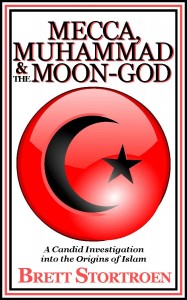

Islamic Jihads of Antiquity by Brett Stortroen is licensed under a Creative Commons Attribution 3.0 Unported License.

